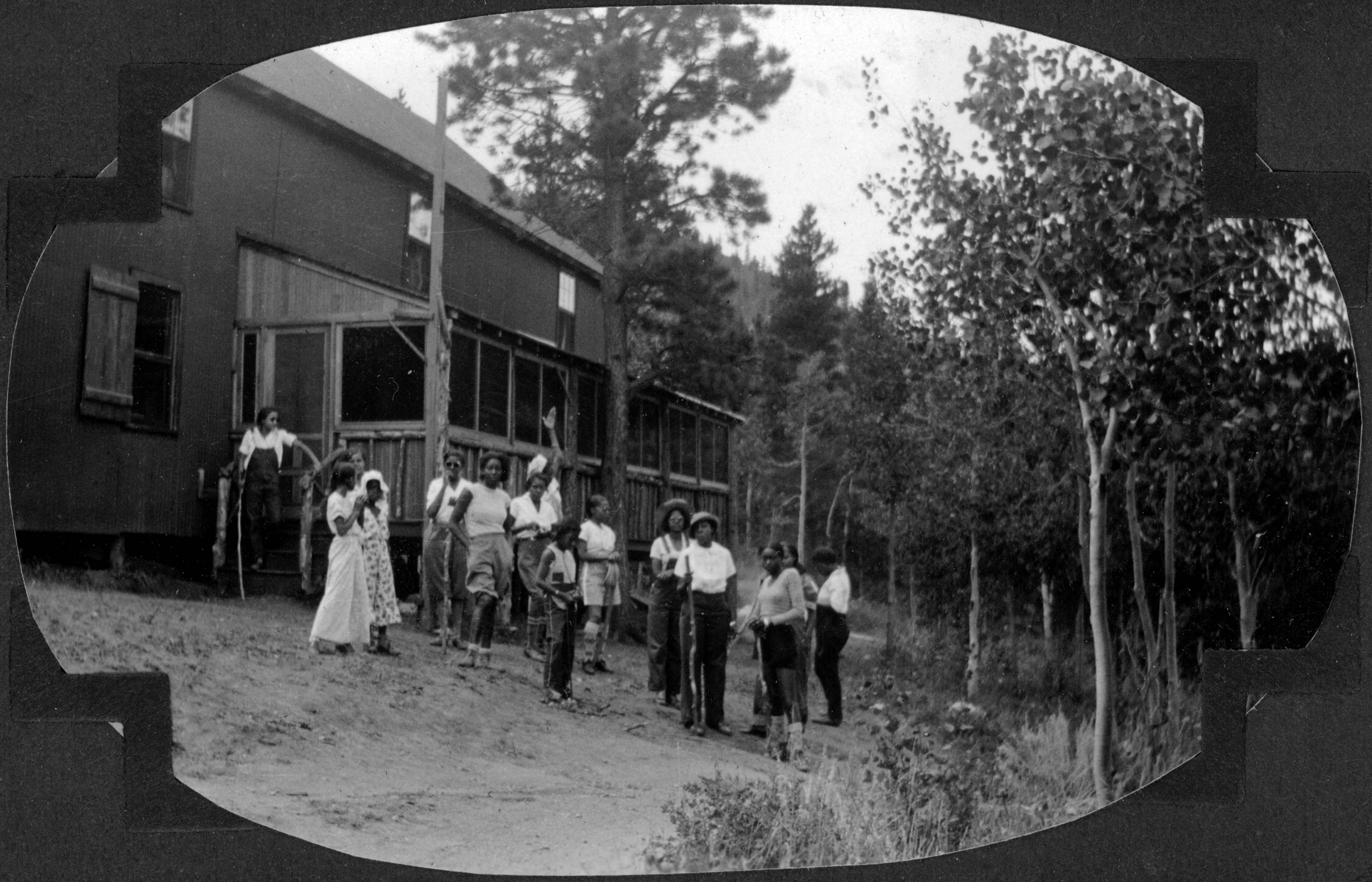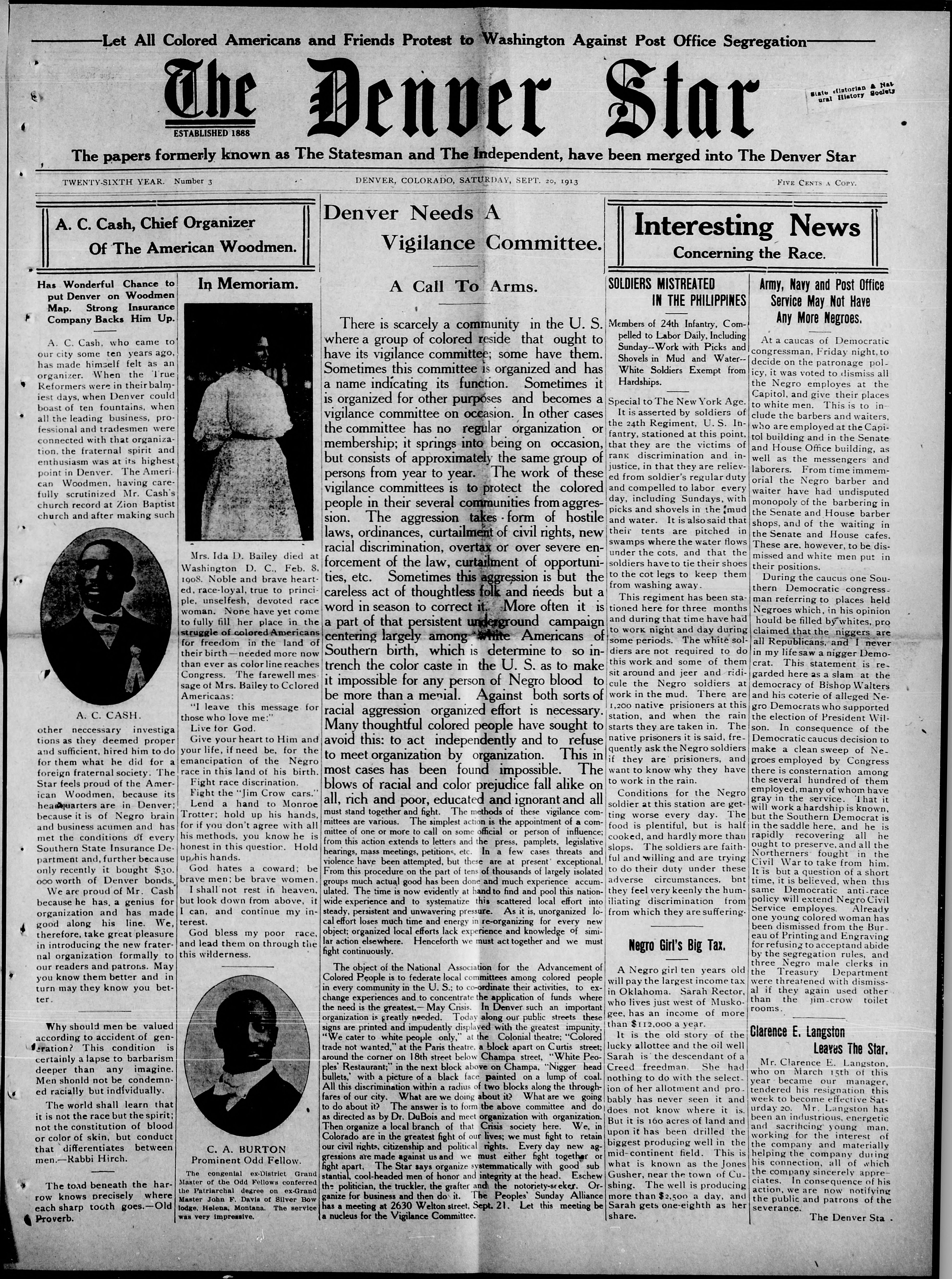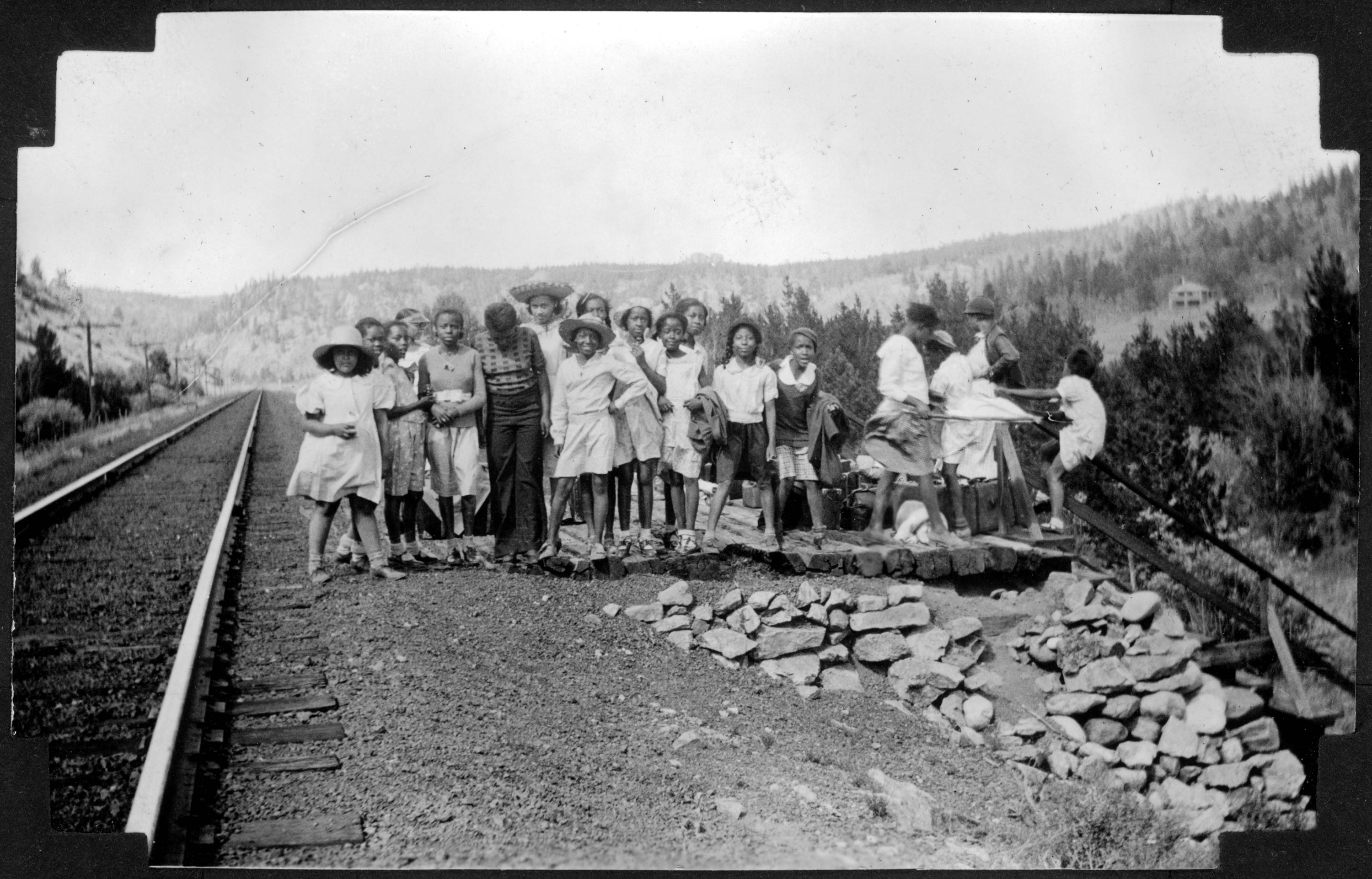Story
Health, Recreation, Education, and Uplift: Lincoln Hills and Black Recreation in the Colorado Mountains
When temperatures soared in cramped, noisy cities, Colorado’s higher elevations promised chilly nights and mild days spent fishing, camping, and hiking under shady pine trees. Unlike their white counterparts, however, African Americans could not head just anywhere in the mountains. Not far outside of Denver, Lincoln Hills, a vacation community developed for Black people, represented both an escape from the city and an escape from segregation.
This escapism had its limits, though, as racism was not confined to Colorado’s urban spaces. African Americans considered outdoor recreation in Colorado's mountains an essential part of well-being and an important marker of respectability that was intimately linked to social movements seeking racial equality. Racism shaped outdoor recreation on public land and the communities that were the gateways to public lands. To secure their own access to natural space, Black people created Black spaces on private land on which to recreate. Staking a claim on natural space was a politically meaningful statement that complemented social activism within Black communities. Lincoln Hills was one of those places.

"Find your supper or you don't eat. Some fun, kids!" Campers and their counselors stand near a building at Camp Nizhoni in Lincoln Hills (Gilpin County), Colorado, in 1934
While Black people throughout the country gravitated to Lincoln Hills for their mountain getaways, many came from Denver. The history of Denver’s Black community significantly predated that of Lincoln Hills. Denver was racially segregated more by custom than law. Immediately following the Civil War, small numbers of Black people migrated west, finding opportunities for social mobility and more racial tolerance than in the South, Midwest, and Far West. They also enjoyed better access to education and achieved higher literacy rates than Black people elsewhere in the country at the time. Black Denverites made their homes in the Five Points and Whittier neighborhoods north of downtown, fostering a politically engaged and tight-knit community that incubated Black political and community organizations as well as businesses. Black people did face racism and discrimination in the West in the late nineteenth century, but the most vehement racial antipathy fell on immigrants from China and Japan. However, that window of relative tolerance at the century’s close was fleeting.

"Denver Needs A Vigilance Committee." reads a headline from the September 20, 1913 issue of The Denver Star
Five Points was home to Black YMCA and YWCA chapters and Black churches, while Black-owned newspapers gave voice to the community’s identity and political aims. As early as 1913, The Denver Star called for “a vigilance committee” to combat “hostile laws, ordinances, curtailment of civil rights, new racial discrimination, over tax or over severe enforcement of the law, curtailment of opportunities, etc.” Neighborhood residents formed the Denver chapter of the National Association for the Advancement of Colored People (NAACP) in 1915. A year later, the Black community organized to successfully block a plan to legalize residential segregation in the city. By the 1930s, Denver’s Black community was stable, with 38 percent of people living in homes they owned. While many notable Black individuals found success in Denver, the majority of African Americans remained employed in service occupations and the Black middle class was economically vulnerable. During roughly the same period, anti-Black racism in Denver deepened with the founding of the local Ku Klux Klan chapter in 1921. The Klan intimidated and vilified Black people (as well as Jews, Catholics, and immigrants) and backed its claim to political power with threatened and actual violence. The Klan’s power reached its zenith in Colorado’s state politics in 1925. In an atmosphere historian Melanie Shellenberger describes as “…a mixture of segregation and integration, blatant discrimination and comparative tolerance,” Black Coloradans navigated an unstable racial landscape as they sought opportunities to spend their leisure time, as well as modest amounts of disposable income, to enjoy the outdoors.
In 1925, E.C. Regnier and Roger E. Ewalt formed Lincoln Hills Inc. and founded Lincoln Hills near Pinecliffe, Colorado. The men’s racial identity is mysterious; while community oral history recalls them as Black, official census records recorded the men as white. Whatever their race, the men clearly understood the local Black community and seemed to genuinely wish to improve Black access to the mountains. Regnier and Ewalt’s development was located less than forty miles from Denver in the Coal Creek Canyon alongside a stretch of South Boulder Creek exceptional for its trout fishing. The location offered easy, inexpensive transportation from the city by railroad or automobile. Small (25-by-100-foot) mountain lots cost only $50, and the company offered simple financing at $5 down and $5 per month. Regnier and Ewalt advertised Lincoln Hills throughout the country. Property owners were mostly from Colorado, but also hailed from other states including Nebraska, Kansas, Wyoming, Missouri, Illinois, and Oklahoma, among others.
Black community leaders in Denver enthusiastically endorsed Lincoln Hills because they saw the project as meaningful to their community. In 1926, pastor of the Zion Baptist Church, G. L. Prince, purchased four lots himself and spoke to the benefits of the mountains as a “tonic” for overwork, noting Lincoln Hills as “a place where our race can show to the Nation a constructive piece of work, in the upbuilding of a great National gathering place for health, recreation, education, and uplift.” The language Prince and others chose in articulating Lincoln Hills’s importance was a clear nod to racial uplift politics, an important early-twentieth-century Black social movement.

Dr. Clarence Holmes on a visit to the mountains
As the sole Black resort in the Mountain West, Lincoln Hills attracted entrepreneurs, pastors, doctors, and other professionals—precisely the kinds of people who participated in racial uplift politics. Those committed to racial uplift understood self-improvement, respectability, and economic productivity as avenues towards civil rights, as well as to American whites’ respect and acceptance. The principles of racial uplift were also compatible with more direct forms of political advocacy and action. The Cosmopolitan Club was an organization founded in 1931 by Clarence Holmes, a prominent Black Denverite and one of the founders of the Denver NAACP. The club promoted interracial and interfaith tolerance among Denver progressives. Holmes and his wife, Fairfax, hosted at least one club meeting at Lincoln Hills in 1937. When understood within its social and political context, Lincoln Hills property owners were not just buying a convenient scenic getaway—consciously or not, they were also securing a symbol of prosperity and self-sufficiency. The property they purchased allowed them to enact socially meaningful rituals of respectability and self-improvement through outdoor recreation—a political act that subverted the exclusive racial norms American whites implemented to control space in the Colorado mountains.
As they made informal claims to ostensibly public land, whites formalized their claims through segregation on private land. Only a handful of miles up the canyon from Lincoln Hills, Wondervu, a development created for working-class vacationers, was “…restricted to mountain homes for white persons.” While the reasoning behind Wondervu’s racial covenants could have been related to a variety of racist concerns, it is possible that developers also wished to prevent Lincoln Hills residents from purchasing additional property elsewhere along the canyon. Summer camps in the mountains were also subject to segregation. Barred from sending girls to segregated YWCA camps, the Phillis Wheatley branch of the Denver YWCA established Camp Nizhoni on a piece of land donated by Lincoln Hills, Inc. in 1924, and operated it until the YWCA integrated its facilities in 1946. At Camp Nizhoni, campers practiced outdoor skills such as hiking, swimming, and cooking over open fires, supervised by YWCA members. A YWCA girl reserve, Marie L. Anderson Greenwood, recalled that running the camp appealed to her because, “It was an experience I had never had in my life…. I loved the out-of-doors and nature and I found in Camp Nizhoni the thing that just made me happy.” Ensuring Black girls’ access to the outdoors and camping was not simply a matter of recreation, but carried political weight as well.

Teenage campers and their counselors from Camp Nizhoni pose by Denver & Rio Grande Western Railroad tracks and a railway stop near the entrance to Lincoln Hills, Colorado
Alongside its social and political significance, Lincoln Hills provided Black people with treasured memories of the Colorado mountains. Oliver Wendall “Winks” Hamlet wrote of visiting his mountain cabin: “It’s the keenest pleasure I have ever known. It thrills and fills me with love for the out-of-doors and I am finding more genuine fun, health, and happiness for both my friends and myself….” Hamlet founded Winks Lodge in Lincoln Hills in 1928, building the three-story, six-bedroom building himself out of local materials, and operating the lodge until his death in 1965. Hamlet was a self-made man and an entrepreneur many times over. Described by his family as “a character,” he would personally collect his guests from the train station and drive them to the lodge. Winks wanted to share his passion for Colorado’s natural environment and give others the opportunity to experience it for themselves, particularly Black youth. Linda Tucker Kai Kai, Winks’s great-grandniece, and Gary Jackson, Winks’s grandson, recalled that the bustling lodge was “Our own private kingdom,” and “a safe haven.” Winks advertised the lodge in the vacation section of The Negro Motorist Green Book from 1953 to 1957, and also placed ads in Ebony. The lodge became the social heart of Lincoln Hills, boasting exceptional food cooked by Melba Hamlet, Winks’s second wife, and dance parties that stretched into the wee hours. Winks Lodge also hosted literary salons in the style of the Harlem Renaissance, and attracted black literary and musical luminaries including Langston Hughes, Zora Neale Hurston, Count Basie, and Duke Ellington, among others.

Dr. Clarence Holmes (left) with William Holmes and Duke Ellington
Lincoln Hills experienced a sharp downturn during the Great Depression. Although many individual properties were lost or abandoned, the lodge held on. Later, the Civil Rights Act of 1964 opened new recreational opportunities to Black people, drawing remaining vacationers away from Lincoln Hills. Hamlet’s death a year later, generational changes in recreation, and the subsequent closure of Winks Lodge dealt the community repeated blows. Over the following years, the lodge passed through various hands, including those of Bertha Calloway, an African American historian who added the lodge to the National Register of Historic Places. For a time, Winks Lodge was also owned by the James P. Beckwourth Mountain Club, also known as the “Beckwourth Doers.” The club’s namesake, James Pierson Beckwourth, was born into slavery in Virginia in 1805 and lived a fascinating life, becoming a famed mountaineer, fur trader, explorer, Indian agent, military scout, Denver business owner, and author. To honor Beckwourth’s legacy, the Beckwourth Club dedicated itself to providing outdoor recreation experiences to Coloradans of color. Today the property is managed by Lincoln Hills Cares, a nonprofit founded by Black Denver developer and founder of the Lincoln Hills Fly Fishing Club, Matthew Burkett, and Robert F. Smith. The Lincoln Hills Cares Foundation seeks to foster environmental leadership through historical education and outdoor recreation opportunities for youth of color at Lincoln Hills, continuing Hamlet’s legacy of sharing the Colorado mountains with a diverse public. Through these experiences, the organization hopes to inspire future generations of children to pursue careers in land management and cultural heritage, and by making steps to improve access to Colorado’s natural landscapes for people of color. For organizations like Lincoln Hills Cares, educating youth about this community’s story challenges the enduring misconception that Black people did not enjoy nature in the past, and questions their continued underrepresentation in natural spaces in the present.
For further reading
“Booker T. Washington and the ‘Atlanta Compromise.’” National Museum of African American History and Culture. https://nmaahc.si.edu/blog-post/booker-t-washington-and-atlanta-compromise.
“Camp Nizhoni.” Lincoln Hills Cares. http://lincolnhillscares.org/winks-panorama.
Carey, Miya. “Becoming ‘A force for desegregation’: The Girl Scouts and Civil Rights in the Nation’s Capital.” Washington History, (Fall 2017) Vol. 29, No. 2: 54.
The Cosmopolitan Club of Denver, Official Records. Denver Public Library, Western History and Genealogical Collections, WH1270. Clarence and Fairfax Holmes papers, 1911–1974, 1890–1978.
“Denver Needs a Vigilance Committee: A Call to Arms,” The Denver Star, September 20, 1913, Denver Public Library: Western History and Genealogy Department.
“Five Points–Whittier Neighborhood History,” Denver Public Library: Genealogy, African American and Western History Resources. https://history.denverlibrary.org/five-points-whittier-neighborhood-history.
O.W. Hamlet to Lincoln Hills, Inc. January 24, 1928. Denver Public Library. ARL39. Lincoln Hills records. Box 1, Folder 8.
“Lincoln Hills.” Colorado Encyclopedia. https://coloradoencyclopedia.org/article/lincoln-hills.
“Lincoln Hills.” Colorado Experience. Documentary Film Series. Rocky Mountain PBS.
Lincoln Hills Warranty Deed List. Lincoln Hills Company. Denver Public Library. ARL39. Lincoln Hills records. Box 1, Folder 13.
Moore, Jesse T. Jr. “Seeking a new life: Blacks in post-Civil War Denver.” The Journal of Negro History. (Summer 1993) vol. 78 no. 3: 171, 175, 178.
National Register of Historic Places Form: Winks Panorama. National Park Service, 17. https://www.nps.gov/nr/feature/places/pdfs/13001035.pdf.
The Negro Motorist Green Book. New York Public Library. Digital Collections.
Noel, Tom. “When the KKK ruled Colorado: Not so long ago.” Blog post. Denver Public Library. https://history.denverlibrary.org/news/when-kkk-ruled-colorado-not-so-long-ago.
G.L. Prince to Lincoln Hills, Inc. March 17, 1926. Denver Public Library. ARL39. Lincoln Hills records. Box 1. Folder 5.
Shellenberger, Melanie. High country summers: The early second homes of Colorado, 1880–1940. Tucson: University of Arizona Press, 2012.
Simmons, Thomas H. Denver Neighborhood History Project, 1993–1994. Denver Public Library, Western History and Genealogy Department, 53.
Standish, Sierra and Thomas, Adam. “Wondervu Historical and Architectural Survey, 2009–2010.” Boulder County Parks and Open Space, July, 2010, 23.
More from The Colorado Magazine
The Women of the WAC Woman Soldiers at Fitzsimons General Hospital
Colorado Is My Classroom More than a century ago, open-air classrooms had a moment in response to another pandemic. Then it was tuberculosis, another era-defining airborne pathogen that attacked the respiratory system. And the results were encouraging. Could fresh air be part of the solution to school in the time of coronavirus?
Kitchen Table History, Even When We’re at Different Tables While our holidays this year may be physically distant, we can still find ways—via phone or Zoom—to connect through reminiscing and stories. This actually feels even more important this year if you know elders who are isolating and alone.
